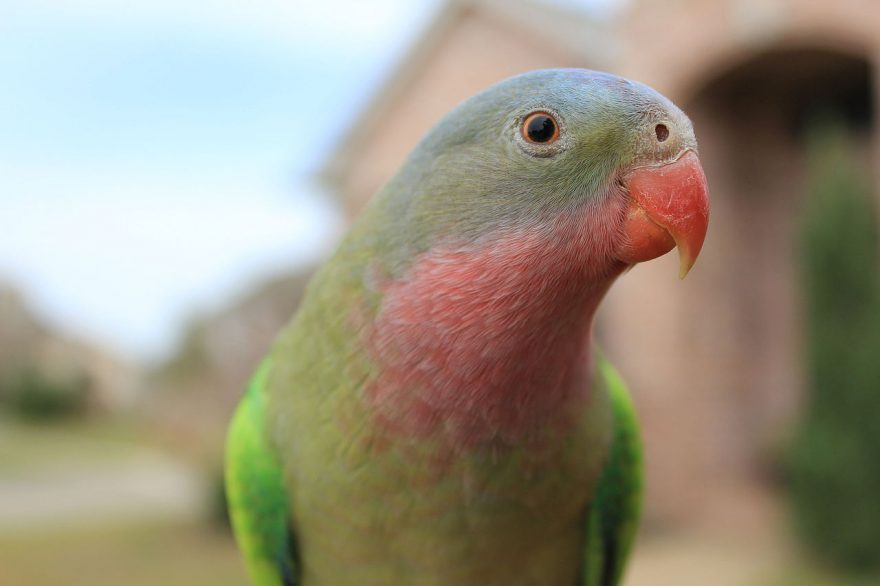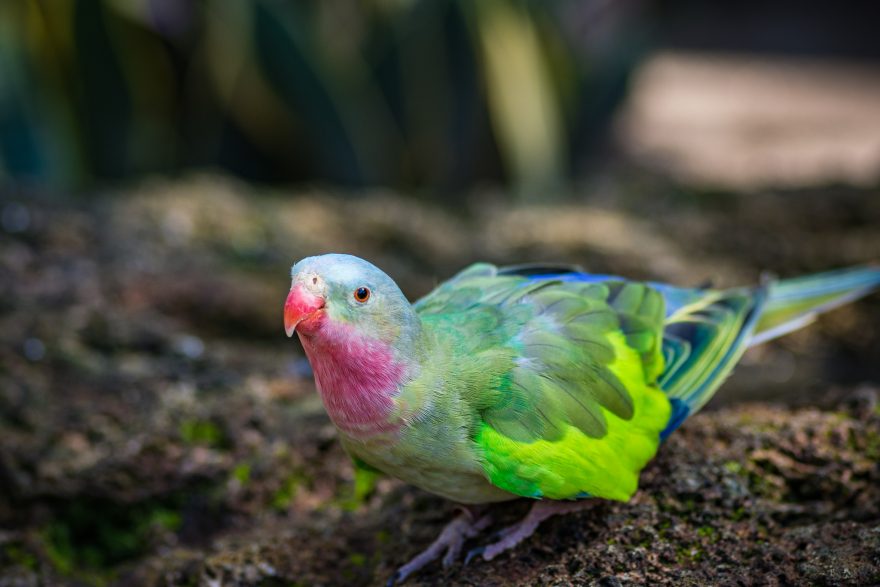The princess parrot is a medium-sized Australian parrot found in arid regions in Western Australia, the Northern Territory, and South Australia. The species is popular in aviculture thanks to its pleasant colouring, ease of breeding, and placid disposition.

Housing & Compatibility
Princess parrots are placid birds that can be kept as multiple pairs per aviary, or in a mixed collection with other placid species. As they’re quite large, housing them with finches is fraught with danger, so stick to larger birds like doves and neophema parrots.
Princess parrots should be provided with an adequate amount of flying space to ensure they receive adequate exercise. Birds that do not have room to fly may suffer from stress or obesity. Four meters (12 ft) of uninterrupted flying space is recommended.
Branches from non-toxic trees should be provided as natural perches. The birds will also enjoy chewing on bark, leaves and seeds for entertainment and beak exercise.
Princess parrots can be very noisy, especially when housed in groups. Be thoughtful of your neighbors when deciding where to house this species.
Princess parrots are closely related to regent parrots and superb parrots. There is a potential for hybridization if these species are housed together.
Diet & Feeding
Seed forms the basis of the princess parrot’s diet. A quality mix designed for small parrots or lovebirds will be acceptable. Seed lacks many essential vitamins and minerals which must be compensated for by introducing other foods. Sprouted seed increases the nutritional value of seed and is a cheap way to improve your birds health. Freshly grown green seed heads should also be offered frequently.
Princess parrots also require a wide variety of fruit and vegetables to ensure good health. They enjoy sweet juicy fruits such as apple and pear, but it’s important to also provide more-nutritious green foods such as broccoli, kale and bok choi. Corn on the cob is especially appreciated.
Pellets can be used a more nutritious alternative to seed, but many birds are unwilling to consume them.
Some birds will consume insects during the breeding season. As insects are a great source of protein, live food such as mealworms or termites should be provided if the birds are willing to eat them.

Breeding
Princess parrots are reasonably easy to breed and generally have excellent fertility and hatch rates. They will typically produce two clutches per year.
Breeding usually commences in spring as the weather begins to warm up. Several different nesting boxes should be offered, as different pairs have differing size/shape preferences. Hollow logs are also suitable as nesting receptacles, however additional care should be taken to control vermin and parasites. A thin layer of pine shavings or sawdust should be placed inside the nestbox.
Incubation is performed exclusively by the hen and lasts for roughly three weeks. Young birds will fledge at 5 weeks of age and become fully independent from their parents 3 weeks later. Young birds can usually be housed with their parents, but they must be separated immediately if aggressive behavior is observed.
Sexing
Princess parrots are sexually dimorphic, meaning they can be visually sexed. Males have a brighter blue patch on their head and darker pink colouring on the throat.
Mutations
A fairly wide variety of princess parrot mutations have been established. Frequently seen colours include blue, yellow, and white (albino).
Health
A strict worm control regime and regular preventative treatment for bacterial and fungal infections is critical to ensure the long-term health of any bird.
A well looked after princess parrot will live in excess of 15 years.
Why have both my princess parrots left their eggs after two to three weeks of sitting on them
Sounds like they’ve given up trying to hatch these eggs. Give it another week or two, and if nothing has happened remove the eggs and let them start again.
My princess parrots have laid their eggs on the ground with no shelter/cover. Should I provide some sort of shelter now, as I can’t see a successful hatching where they are. If so what sort of shelter would be best please.
hi at what age can you tell between males and females ? also i got told i have a pair of princess parrots but what i thought was a female got on top of another female which i was wrong is this normal or am im i going insane. please help
I have two males and one female Princess Parrots is it best to separate them in two aviaries so the male do not fight during Breeding Season?